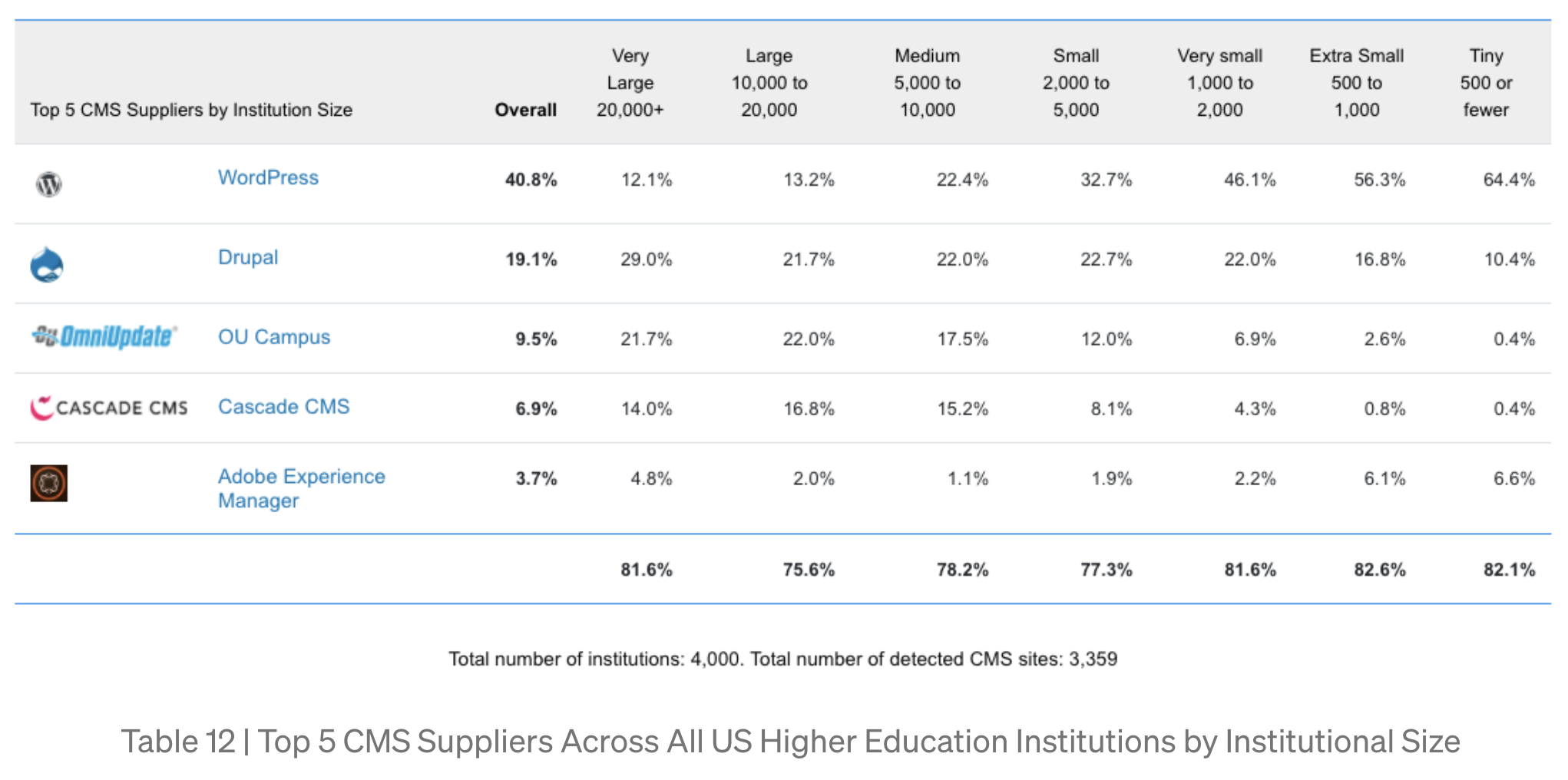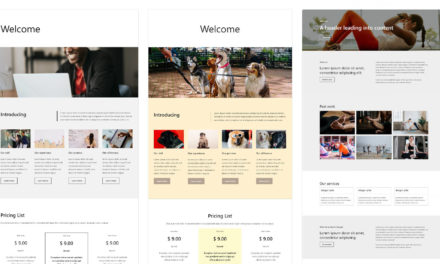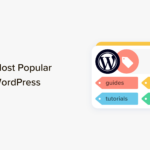A new report from eQAfy, a company that collects and analyzes data about higher education websites, has benchmarked which content management systems US institutions are using. The report is a snapshot of data from December 2020, sourced from the National Center for Education Statistics IPEDS database. After scanning a list of 4,000 active institutions, EQAfy’s headless browser was able to detect the CMS for 3,359 homepages (83.8%).
A market leading group of 12 content management systems made up 90% of the homepages eQAfy detected, including four open source solutions and eight proprietary solutions. WordPress captures 40.8% of the market, followed by Drupal at 19.1%, as measured across all institution types (public, private for profit, and private non-profit), levels (2-year and 4-year), and sizes.

WordPress’ estimated market share for public institutions came in at 27%, and is much higher in the private for-profit institutions category at 55%.
Looking at 2-year public higher education institutions by student population, WordPress falls to #3 at just 18.3%. Drupal leads the pack in that category with 29.2%, and proprietary CMS’s take up the rest of the market. WordPress does much better in the category of 4-year private for-profit higher education institutions, capturing a staggering 75% of the market.
When examining CMS suppliers for institutions by size, WordPress is the overall market leader but does far better in the smallest institutional size categories, with waning dominance in the large to very large categories.

The report has more interesting data comparisons across different categories if you want to dig deeper. It’s important to note that eQAfy only collected the main websites for these institutions, which may not be representative of the CMS that powers the schools’ ancillary websites. They are often created using a combination of platforms. This report covers only which CMS the schools preferred to use for the face of their institutions.











